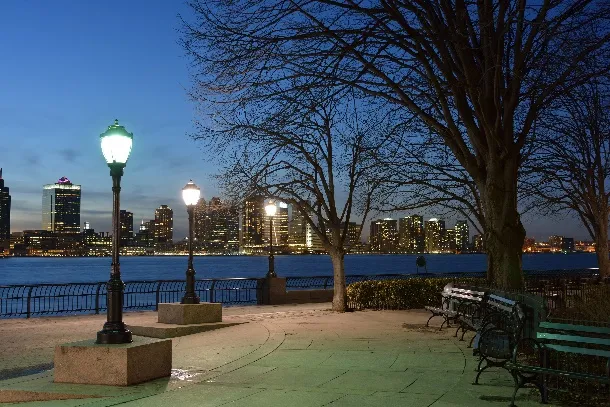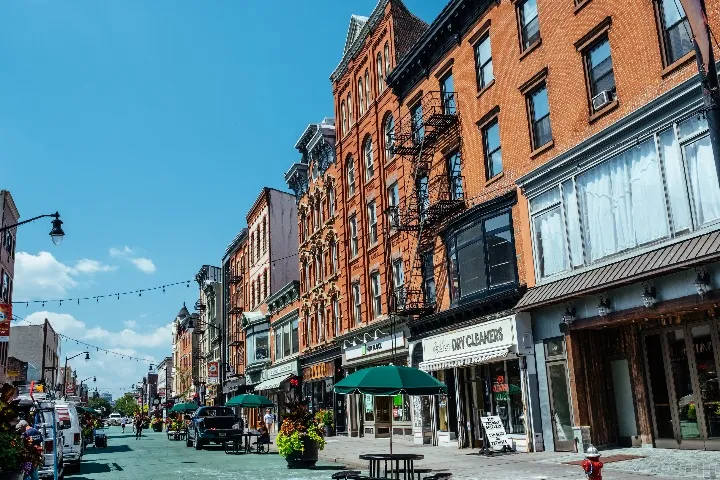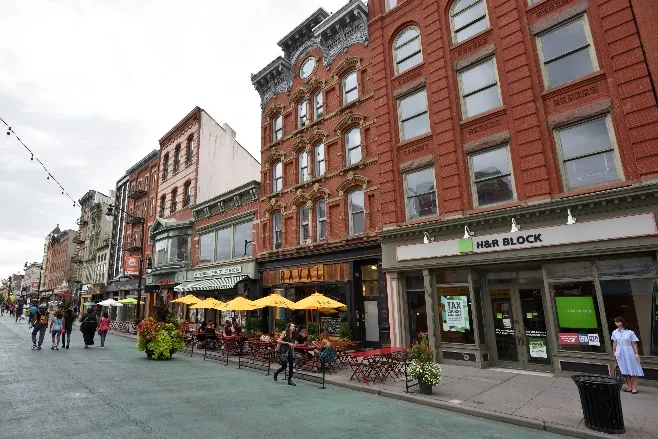More than a decade after Hurricane Sandy devastated New Jersey and New York, causing upwards of $60 billion in damages, climate change continues to take its toll on coastal communities in the form of extreme weather, flooding, power outages, property damage and billions in economic losses.
In response, one city in the path of these storms has decided to lead the state and the nation, by becoming a model for municipal resilience and climate action. Since 2015, Jersey City, New Jersey, has been dedicated to fighting climate change. As a part of its Climate and Energy Action Plan, it has committed to reducing its greenhouse gas (GHG) emissions by 80% by 2050.
The plan, informed by climate science and community feedback, will ensure that the city is safe and healthy for its most vulnerable residents for many generations to come. Achieving this ambitious goal requires aggressive action to electrify and decarbonize the city’s buildings and transportation systems.
What does the city of the future need to weather the storm?
Jersey City embarked on a comprehensive Energy Savings Improvement Plan (ESIP) in June of 2022, which includes energy infrastructure updates, a disaster preparedness strategy and investment in clean technologies like electric vehicles, solar panels and the nation’s first self-sustaining municipal microgrid for resilient power.
Upon initiating its energy savings plan, the city government laid out six objectives for the project to achieve:
-
Reduce energy and operational expenses
-
Expand Jersey City’s position as a sustainability leader
-
Fund urgent, unavoidable capital needs
-
Make facilities more energy resilient
-
Improve indoor air quality and protect the health of employees and the community
-
Create local green jobs
The impact of Jersey City’s Energy Savings Improvement Plan

To execute all six goals, the city engaged Schneider Electric to design and execute a comprehensive set of actions that will address infrastructure needs at 26 facilities throughout the city, all while maximizing energy savings, improving air quality and building climate preparedness.
The project integrates several energy-efficient and sustainable upgrades:
Sustainable sanitation: Transitioning the sanitation truck fleet to electric vehicles will save the city in gas and maintenance costs. In times of emergencies or fuel shortages, the sanitation system will not encounter service disruptions.
Modernized buildings: Retrofitted LED lighting, updated building envelope and insulation, building automation and HVAC renovations ensure that city facilities use energy as efficiently as possible, reducing costs and emissions, while making buildings more comfortable for residents.
Resilient power: Solar power, battery storage, a backup generator and the EV fleet combine to form a microgrid that ensures the city can continue reliable operation for up to 14 days even if there is a power grid failure. Solar PV panels installed on rooftops and car ports provide affordable, clean energy that drives savings, which can be poured into other sustainable investments.
Together, these improvements ensure reliable power and access to critical city services, such as emergency cooling centers and sanitation, even during an extended power outage or fuel shortage. Better yet, while protecting the city’s buildings and its residents, the project will reduce energy and operational costs by $13 million. In total, the project will fund $15 million in urgent capital needs across the City.
Jersey City’s Climate Action Plan is a blueprint for protecting your city

Jersey City’s leading-edge plan to reduce exposure to climate change and boost resilience demonstrates the power of having a proactive leadership team, the right partner and the willingness to invest in their community’s future.
“The Energy Savings Improvement plan and all the infrastructure improvements that come with it, is in service of the community and residents of Jersey City. As leaders of this city, it is our fiduciary and moral duty to protect our residents from both the physical manifestations and economic impacts of climate change. Our investment in resilience, energy efficiency and independence and disaster preparedness today will ensure that we are protected from whatever the future throws our way tomorrow.”
– Jersey City Mayor, Steven Fulop
By setting out bold climate targets, the city has cemented sustainability as a core value and by doing so, gave its climate action program the momentum and support it needs to overcome any hurdles it may face. With Schneider Electric as its consultant and implementation partner, the city has charted an innovative path that acts as a blueprint for other towns and municipalities to follow.
Resilience planning is a key first step to preparation

Frequent and intense natural disasters are becoming a fact of life. But the way that a city responds to them is entirely in its control. Though it can be tempting to focus on the here and now, acting on only the necessary maintenance and repairs, investment in a resilient future can bring tremendous value to a city.
The best preparedness plans blend short- and long-term solutions, to increase resilience now while laying the foundation for larger, more innovative updates. With the right strategy and leadership, any town can emulate the Jersey City formula, building a master plan that bridges climate preparedness and resilience with energy savings that bring a net-positive impact to the budget and community members.
Learn how municipalities of all sizes are making resilient, sustainable changes for the future in the eBook, Built to Last: A Sustainable Infrastructure Primer for Local Governments.










